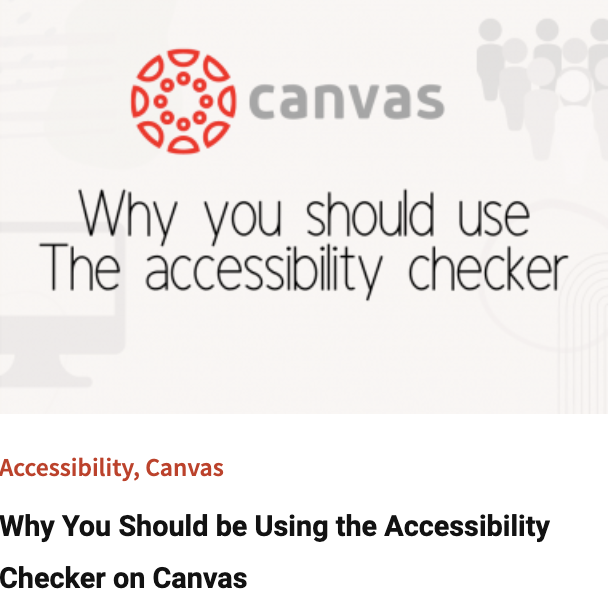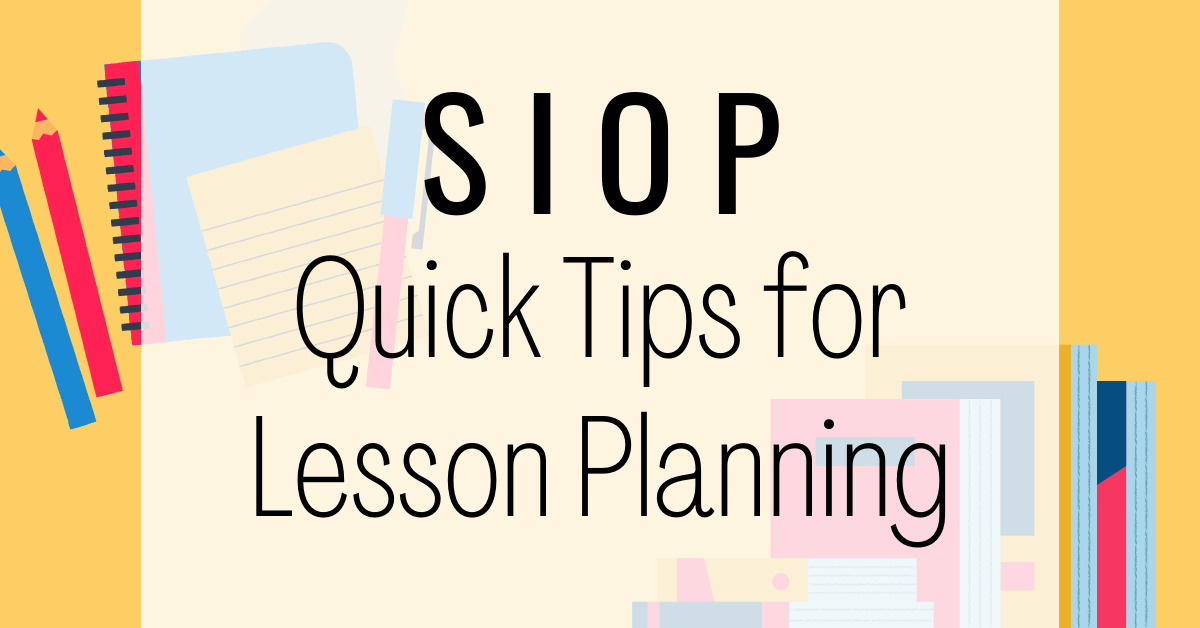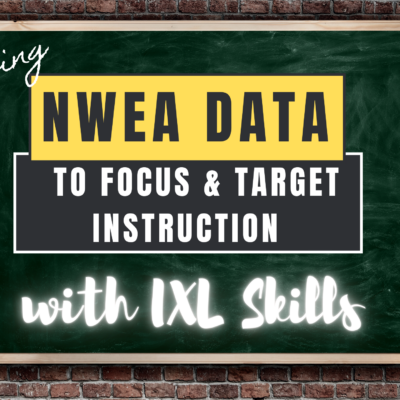In my classroom, I want all students to learn. Don’t we all? But I also want my nights and weekends to myself and not to be spent lesson planning. So how does one find the time to plan for all SIOP components within every lesson you teach and still work within contract hours? Well, the truth is… you don’t. At least not yet.
If you are just getting started on the journey to ensuring your lessons are accessible to all, let me be the first to welcome you to our quest. Below I broke down the SIOP components into two topics – what I personally consider non-negotiable components and that would be really nice components when it comes to incorporating SIOP into my planning. I try to hit the non-negotiables for every main lesson for the day. Many of the components “that would be really nice” I may not be able to plan for for every lesson, but I try to fit them in throughout each unit or utilize them as I see fit.
Non-Negotiables in my Lesson Planning:
My non-negotiables are the SIOP components that I ensure are included with every lesson. These are at the core of my instruction and help to ensure that all students are able to access material.
Lesson Preparation
Content and Language Objectives
The goal of a lesson should never be a secret. Find a consistent way to tell students what they are expected to learn from a lesson. Need some ideas on how to share content and language objectives with your class? Check out this blog post for 5 ways to use content and language objectives in your classroom.

Intentionally accessible
Stop getting lucky and be intentional in your planning. Your lesson materials should be accessible by all your students. What do you need to do to ensure all students can read, understand, and respond to your lesson? Do you need text to be read aloud? Do you need to create cloze notes? I promise this is worth your time. Looking to make your digital learning more accessible? Learn more about the canvas accessibility checker here and attaching voice to objects on seesaw here.

Strategies
Are you using the same teaching strategies everyday? Consider using this SIOP Toolbox to help vary your teaching strategies to be intentionally helpful for your EL students.
Comprehensible Input
This is all about making sure students know what to do because they understand the words you are using. Make your directions direct and clear. Consider offering students a checklist of steps they can use at their desk to make sure they know what to do, and in what order.

Pick out those big, abstract ideas and intentionally plan to talk about those with students, in either whole group or in small groups, using speech within your students proficiency levels.
Review and Assessment
How do you know students learned? Plan for it. A quick 2 question exit ticket. A google form. My favorite is a sticky note on the board as students walk out of the classroom or as you transition to the next lesson.
What feedback will students receive from you? Plan the type of feedback you will give and block off time in your planning time to give such feedback. But remember, your time is limited. You do not need to give feedback on every single assignment. Give more meaningful feedback on important items that students will be able to revisit, revise, and use to continue learning.
Looking for more ways to give feedback? Check out our other feedback articles on the blog, here.
Extra time? Easy add-ons:
Building Background
Determine what vocabulary students need to know in order to understand your lesson or unit and don’t make it hard for students to know what those words mean. Plan time to talk about the important words in the unit. After you review them, put them up somewhere for students to access. This can be displayed in your classroom or presented to students digitally on canvas or seesaw. If digital, be sure to take time in the beginning of your unit to show students where they can find this information.
Interactions
Plan for how students will interact with one another. Students learn better from one another than they do their teacher, but don’t leave it up to chance that your EL student will be partnered with a helpful student. Be intentional about interactions. Consider appropriate times to use the different types of grouping.
Practice and Application
Look for quick places where students could use hands on materials to help learn this concept better. Consider planning additional opportunities for students to practice their language objective? Need suggestions for hands-on activities? Check out our blog post here.
Lesson Delivery
As a teacher that regularly breaks out in spontaneous story times, be intentional about not getting off task conversations going. Plan for pacing. Keep an eye on the clock and have a rough estimate of where you should be at any given time during your lesson.
Do you have any quick tips for incorporating the SIOP components into your teaching? Let us know if the comments below!




Holly,
Thank you for the reminders in this blog! I also love the embedded links – I have many of them open now for review.
Thanks, Sarah! I’m glad you found it helpful.